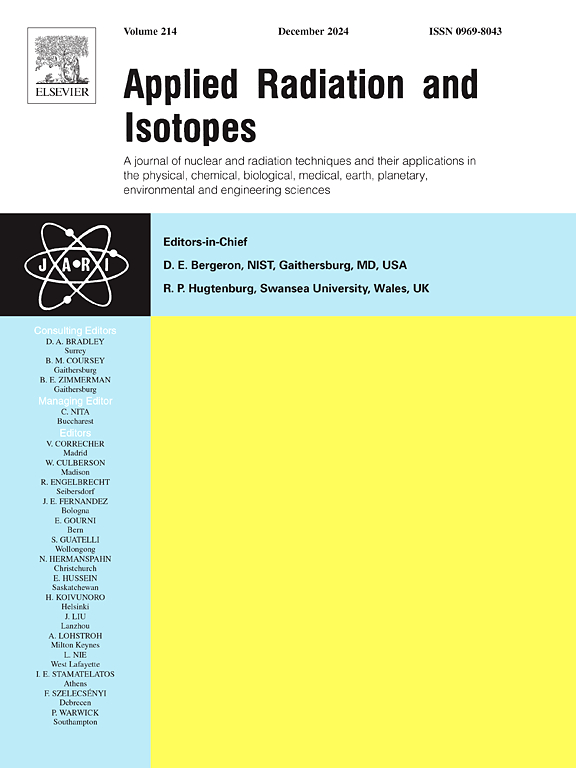Evaluation of stochastic method on track density analysis for passive radon measurement
IF 1.6
3区 工程技术
Q3 CHEMISTRY, INORGANIC & NUCLEAR
引用次数: 0
Abstract
Passive radon monitors with CR-39s are commonly used in major epidemiological studies. However, the conventional CR-39 track density analysis method makes it difficult to estimate the concentration accurately due to the heterogeneity of tracks on CR-39s and the small track reading area. Track heterogeneity in CR-39 detectors arises from exposure-related and detector-related factors. To improve the accuracy of track density analysis in passive radon monitors, this study implemented a new stochastic approach utilizing Latin Hypercube Sampling (LHS) to compare the performance to the conventional method. Consequently, the stochastic method reduces the root mean square deviation of mean track density by 15.6 % compared to the conventional method. The coefficient of determination of the stochastic method is significantly higher than that of the conventional method in the linear correlation of estimated track density and accumulated exposure. The stochastic method utilizing the LHS for track density analysis decreased the total counting area of CR-39 and performed congruently and effectively, as the large counting area using the conventional strategy. These findings suggest the stochastic approach is a promising method for improving track density determination in passive radon measurements with CR-39 detectors.
被动测氡轨道密度分析随机方法的评价
带有CR-39s的被动氡监测仪通常用于重大流行病学研究。然而,传统的CR-39轨道密度分析方法由于CR-39轨道的非均匀性和轨道读取面积小,难以准确估计浓度。CR-39探测器的轨迹不均匀性是由暴露相关因素和探测器相关因素引起的。为了提高被动氡监测仪中轨迹密度分析的准确性,本研究采用拉丁超立方体采样(LHS)的随机方法与传统方法进行了性能比较。因此,与传统方法相比,随机方法使平均轨道密度的均方根偏差降低了15.6%。在轨道估计密度与累积暴露量的线性相关性方面,随机方法的决定系数明显高于常规方法。利用LHS进行轨道密度分析的随机方法减少了CR-39的总计数面积,并且与传统策略的大计数面积一致有效。这些发现表明,随机方法是一种很有前途的方法,可以改善CR-39探测器被动氡测量中的径迹密度测定。
本文章由计算机程序翻译,如有差异,请以英文原文为准。
求助全文
约1分钟内获得全文
求助全文
来源期刊

Applied Radiation and Isotopes
工程技术-核科学技术
CiteScore
3.00
自引率
12.50%
发文量
406
审稿时长
13.5 months
期刊介绍:
Applied Radiation and Isotopes provides a high quality medium for the publication of substantial, original and scientific and technological papers on the development and peaceful application of nuclear, radiation and radionuclide techniques in chemistry, physics, biochemistry, biology, medicine, security, engineering and in the earth, planetary and environmental sciences, all including dosimetry. Nuclear techniques are defined in the broadest sense and both experimental and theoretical papers are welcome. They include the development and use of α- and β-particles, X-rays and γ-rays, neutrons and other nuclear particles and radiations from all sources, including radionuclides, synchrotron sources, cyclotrons and reactors and from the natural environment.
The journal aims to publish papers with significance to an international audience, containing substantial novelty and scientific impact. The Editors reserve the rights to reject, with or without external review, papers that do not meet these criteria.
Papers dealing with radiation processing, i.e., where radiation is used to bring about a biological, chemical or physical change in a material, should be directed to our sister journal Radiation Physics and Chemistry.
 求助内容:
求助内容: 应助结果提醒方式:
应助结果提醒方式:


